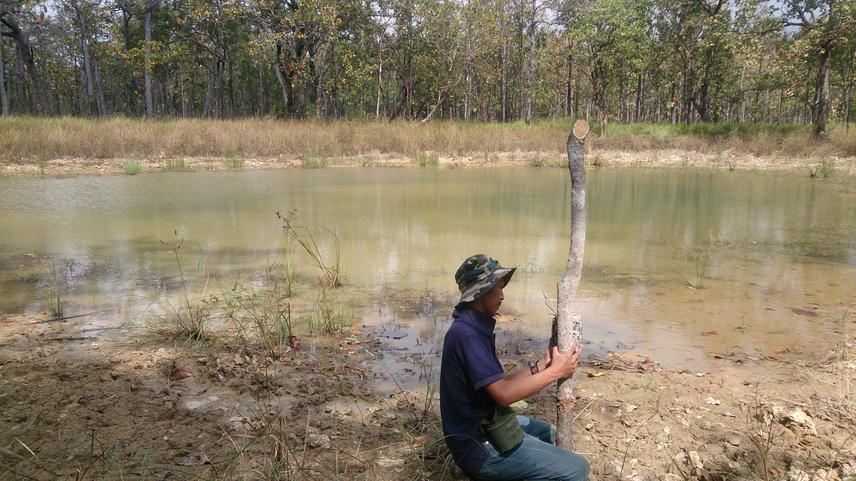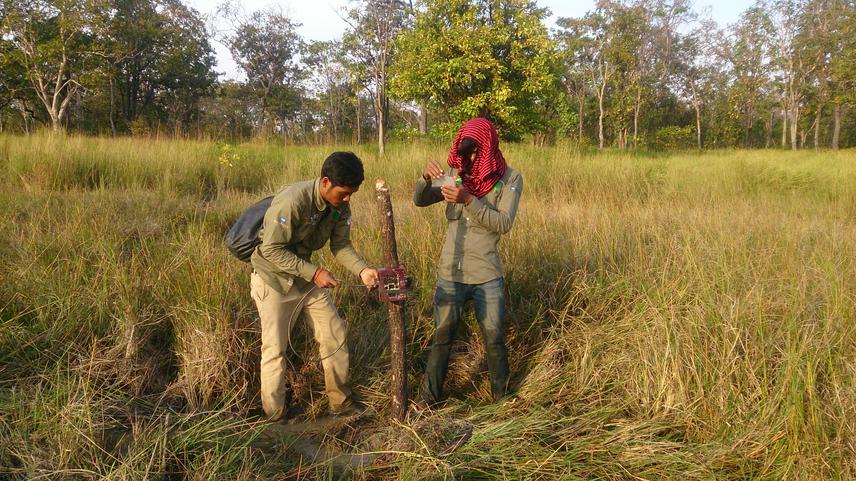Chanratana Pin
Aims are to:
- To estimate waterhole occupancy and detection probability of wildlife including large ungulates and large waterbirds. (special focus on large ungulates: Banteng, Eld’s deer, Wild pig and Red muntjac)
- To determine the landscape characteristics and anthropogenic factors which could influence the use of waterholes by these species.

The Eastern Plains Landscape of Cambodia supports the most extensive lowland deciduous dipterocarp forests remaining in South East Asia. Water availability plays a decisive influence on these dry forest ecosystems and may limit the distribution of animals. We expect that the dynamics of water availability in waterholes in Mondulkiri Protected Forest, a key protected area in the Eastern Plains Landscape, will influence animal distribution and possibly population size. During the dry season, the landscape’s water availability is largely limited to seasonal waterholes. These form an integral part of the dry forest ecosystem including the dry forest landscape of the Mondulkiri Protected Forest (MPF), of the Eastern Plains Landscape (EPL); Cambodia and are used by a suite of globally threatened large mammals and large waterbirds including Eld’s deer and banteng (both IUCN EN) and giant and white-shouldered ibis (both IUCN CR). It is important to understand the use of waterholes by these species as it can help in wildlife conservation and protected area management.

This research aim to use camera-traps to photograph wildlife (especially endangered Eld’s deer, Banteng and large waterbirds) examines the utilization of seasonal waterholes and the influence of landscape characteristics and anthropogenic factors on waterhole use by large ungulates and waterbirds in MPF in order to influence protected area management and law enforcement strategies.
The results from this study can be used for baseline data for taking initial step for waterhole management (protected area management and decision making whether or not to manipulate these waterholes) for wildlife conservation, and also help to enhance law enforcement by understanding impacts of disturbance and patrolling on waterhole use. It will also provide a baseline for use of waterholes by wildlife which can be used for monitoring.